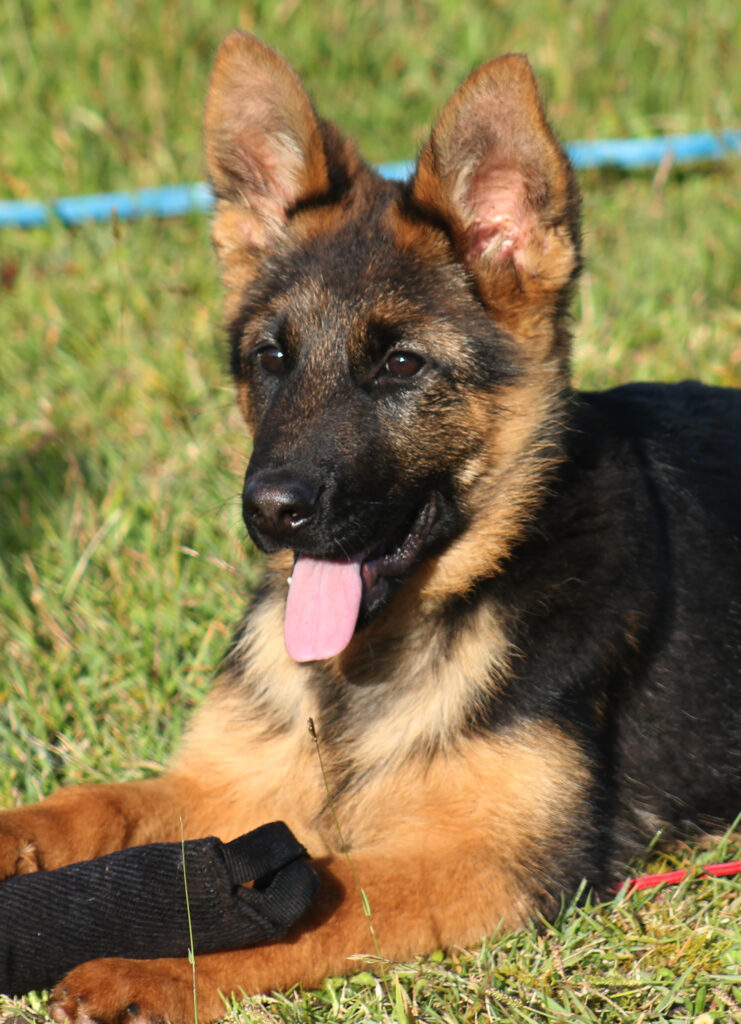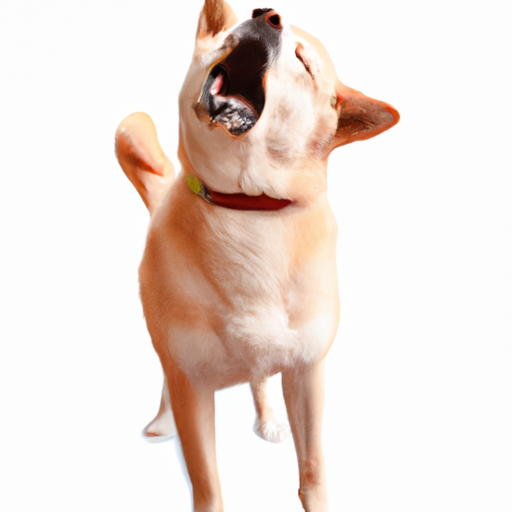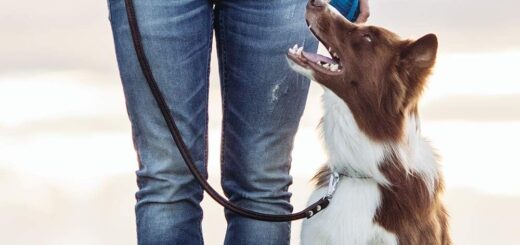Canine Communication: Understanding Your Dog’s Body Language
Have you ever wondered what your furry friend is trying to tell you with their wagging tail or perked-up ears? In this article, we will explore the fascinating world of canine communication and help you understand your dog’s body language. By learning to decipher their signals, you can develop a deeper connection with your four-legged pal and ensure their emotional well-being. So, get ready to unravel the secrets behind those barks, yawns, and tail wags!

This image is property of images.pexels.com.
1. Canine Body Language
Dogs have their own way of communicating with us and with each other. They can’t speak our language, but they communicate through their body language. By understanding their body language, we can better understand what our furry friends are trying to tell us. Canine body language can be broken down into different categories: visual signals, auditory signals, and olfactory signals.
1.1 Visual Signals
Visual signals refer to the way dogs use their bodies and facial expressions to communicate. For example, if a dog is happy and relaxed, their tail might wag, their ears might be up, and their body posture might be loose and relaxed. On the other hand, if a dog is feeling scared or anxious, their body might be tense, their tail might be tucked between their legs, and their ears might be flattened against their head. It’s important to pay attention to these visual signals to better understand how our dogs are feeling.
1.2 Auditory Signals
Dogs also communicate through their voices. They can bark, growl, whimper, and howl to convey different messages. For example, a playful bark might mean that a dog wants to play, while a deep growl might mean that a dog is feeling threatened or angry. It’s important to listen to these auditory signals to understand what our dogs are trying to tell us.
1.3 Olfactory Signals
In addition to visual and auditory signals, dogs also use their sense of smell to communicate. They can communicate through scent marking and sniffing. When dogs sniff each other, they are gathering information about each other. They can also leave behind scent marks to communicate with other dogs. By paying attention to their olfactory signals, we can gain insight into their interactions with other dogs and their environment.
2. Recognizing Stress and Anxiety
Dogs, just like humans, can experience stress and anxiety. It’s important for us to be able to recognize the signs of stress and anxiety in our dogs so that we can help them feel more comfortable. Some common signs of stress and anxiety in dogs include active avoidance behaviors, displacement behaviors, and freezing or stiffening.
2.1 Active Avoidance Behaviors
When a dog is feeling stressed or anxious, they may try to actively avoid the situation or stimulus that is causing them distress. For example, they may try to escape by running away or hiding. They may also turn their head away or try to walk in a different direction. By recognizing these avoidance behaviors, we can remove our dogs from stressful situations and help them feel more at ease.
2.2 Displacement Behaviors
Displacement behaviors are actions that dogs exhibit when they are feeling conflicted or unsure. These behaviors can include things like yawning, scratching, or sniffing the ground. Displacement behaviors are a way for dogs to release tension and cope with their anxiety. By recognizing these behaviors, we can help our dogs feel more comfortable and reduce their stress levels.
2.3 Freezing or Stiffening
Sometimes, when dogs are feeling stressed or anxious, they may freeze or stiffen their bodies. This is a sign that they are feeling threatened or scared. It’s important not to approach or touch a dog that is frozen or stiff, as this can increase their stress levels. Instead, we should give them space and time to relax and calm down. Understanding these signs of stress and anxiety can help us provide the appropriate support to our furry friends.

This image is property of images.pexels.com.
3. Understanding Calming Signals
Dogs have their own way of calming themselves down and communicating their intentions to other dogs or humans. These calming signals can help to diffuse tension and promote peaceful interactions. Some common calming signals in dogs include licking lips, yawning, and turning away.
3.1 Licking Lips
Licking the lips is a common calming signal in dogs. When a dog licks their lips, it can be a sign that they are feeling anxious or trying to calm themselves down. It’s important to pay attention to this signal and give our dogs space when they are exhibiting this behavior.
3.2 Yawning
Yawning is another common calming signal in dogs. When a dog yawns, it can be a sign that they are feeling stressed or trying to communicate their non-threatening intentions to other dogs or humans. By recognizing this signal, we can help our dogs feel more comfortable and reduce their stress levels.
3.3 Turning Away
Turning away is a way for dogs to signal that they are not a threat and are trying to avoid conflict. When a dog turns their head or body away from someone or something, it’s important to respect their boundaries and give them space. This can help to create a more positive and peaceful environment for our furry friends.
4. Signs of Aggression
While dogs are generally friendly and loving animals, there are times when they may exhibit signs of aggression. It’s important to be able to recognize these signs so that we can ensure the safety of both our dogs and those around them. Some common signs of aggression in dogs include direct staring, raised hackles, and snarling or baring teeth.
4.1 Direct Staring
Direct staring is a sign of aggression in dogs. When a dog stares directly at someone or something without breaking eye contact, it can be a warning sign that they are feeling threatened or aggressive. It’s important not to engage in staring contests with dogs, as this can escalate the situation and increase the risk of aggression.
4.2 Raised Hackles
Raised hackles refer to the hair standing up on a dog’s back. This is a physical sign of aggression or arousal. When a dog’s hackles are raised, it means that they are ready to defend themselves or engage in aggressive behavior. It’s important to be cautious when observing raised hackles and give the dog space if they are exhibiting this behavior.
4.3 Snarling or Baring Teeth
Snarling or baring teeth is a clear sign of aggression in dogs. When a dog snarls or shows their teeth, they are warning others to stay away. It’s important to respect a dog’s warning signs and give them the space they need. Engaging with an aggressive dog can lead to dangerous situations.

This image is property of images.pexels.com.
5. Playful Body Language
Not all body language in dogs is related to stress or aggression. Dogs also have their own body language to communicate when they are feeling playful and friendly. Understanding these signals can help us engage in safe and enjoyable play with our dogs. Some common playful body language in dogs includes bowing, playful biting, and playful chasing.
5.1 Bowing
When a dog wants to initiate play, they may perform a play bow. This is when they lower their front end and keep their rear end in the air. It’s an invitation for other dogs or humans to engage in play. By recognizing this body language, we can respond appropriately and join in on the fun.
5.2 Playful Biting
Playful biting is a common behavior in puppies and young dogs. It’s their way of engaging in play and learning bite inhibition. Playful biting should not be mistaken for aggressive biting, as it is usually gentle and accompanied by happy body language. It’s important to set boundaries and teach our dogs what is acceptable play biting and what is not.
5.3 Playful Chase
Chasing is a common play behavior in dogs. When a dog wants to play, they may initiate a game of chase with other dogs or humans. It’s important to make sure that all parties are willing participants and that the play is safe and enjoyable for everyone involved. Playful chasing can help dogs release energy and have fun.
6. Body Language in Fearful Dogs
Some dogs may be naturally more fearful or have had negative experiences that make them anxious and fearful in certain situations. Understanding their body language can help us provide them with the support and reassurance they need. Some common body language signals in fearful dogs include cowering or trembling, tail tucking, and excessive panting.
6.1 Cowering or Trembling
When a dog is feeling fearful, they may cower or tremble. They may lower their body close to the ground and shake or tremble uncontrollably. It’s important to approach fearful dogs slowly and calmly, and give them space to feel safe. Rushing or overwhelming them can increase their fear and make the situation worse.
6.2 Tail Tucking
Tail tucking is a clear sign that a dog is feeling fearful or submissive. When a dog tucks their tail between their legs, it’s a way of trying to make themselves look smaller and non-threatening. It’s important to give dogs with tucked tails space and time to relax. Forcing interaction can increase their anxiety.
6.3 Excessive Panting
Excessive panting is a common sign of stress or anxiety in dogs. When a dog is feeling fearful, they may pant excessively as a way to release their pent-up energy. It’s important to provide a calm and quiet environment for fearful dogs and avoid situations that may trigger their anxiety.

7. Submissive Behaviors
Just as dogs can exhibit signs of aggression, they can also display submissive behaviors. These behaviors are signals that a dog is acknowledging another dog’s dominance and is trying to avoid conflict. Some common submissive behaviors in dogs include rolling over, exposing their belly, and lifting a paw.
7.1 Rolling Over
When a dog rolls over and exposes their belly, it’s a sign of submission. It’s their way of saying “I acknowledge your dominance, please don’t harm me.” It’s important to respect a dog’s submissive behavior and not to take advantage of their vulnerability. Engaging with a submissive dog in a gentle and non-threatening manner can help build trust.
7.2 Exposing Belly
Exposing the belly is another way for dogs to communicate submission. When a dog lies on their back and exposes their belly, it shows that they are not a threat and are trying to avoid conflict. It’s important to respond to this behavior with care and gentleness, as it is a sign of trust and vulnerability.
7.3 Paw Lifting
Lifting a paw is a subtle but common submissive behavior in dogs. When a dog lifts their paw, it’s a way of showing deference and respect to another dog or human. It’s important to recognize this behavior and respond in a calm and gentle manner. Pushing a dog to interact or using force can break their trust and lead to negative outcomes.
8. Communication with Humans
Dogs not only communicate with each other, but they also communicate with us humans. Understanding their body language can help us better interpret their needs and desires. Some common ways dogs communicate with humans include eye contact, tail wagging, and vocalizations.
8.1 Eye Contact
Eye contact is an important form of communication between dogs and humans. When a dog stares into our eyes, it can mean different things. A soft, gentle gaze usually indicates affection and trust, while a hard stare can indicate aggression or a challenge. Paying attention to a dog’s eye contact can help us understand their intentions.
8.2 Tail Wagging
Tail wagging is a classic sign of a dog’s happiness and excitement. However, it’s important to understand that not all tail wagging is a sign of friendliness. The speed, height, and stiffness of the wag can indicate different emotions. A loose and relaxed wag usually means a dog is happy, while a fast and stiff wag can indicate agitation or arousal. It’s important to pay attention to the context and other body language signals when interpreting a dog’s tail wagging.
8.3 Vocalizations
Dogs use vocalizations, such as barking, growling, whimpering, and howling, to communicate with humans. For example, a bark can mean different things depending on the situation. It can be a sign of alertness, warning, excitement, or even fear. By paying attention to a dog’s vocalizations and accompanying body language, we can better understand what they are trying to communicate.

9. Misunderstood Signals
Sometimes, we misunderstand our dogs’ body language, which can lead to miscommunication and potentially dangerous situations. It’s important to be aware of some commonly misunderstood signals so that we can better interpret our dogs’ intentions. Some of these signals include tail wagging, jumping up, and mouthing.
9.1 Tail Wagging
While tail wagging is often associated with happiness and friendliness, it’s not always the case. A dog can wag their tail when they are feeling anxious, aroused, or even aggressive. It’s important to look at the overall context and other body language signals to understand what a dog is trying to communicate through their tail wagging.
9.2 Jumping Up
Jumping up is a behavior that many dogs exhibit when they are excited or seeking attention. While it may seem playful, it can also be a sign of dominance or an attempt to establish control. It’s important to establish boundaries and discourage jumping up behavior to maintain a balanced and respectful relationship with our dogs.
9.3 Mouthing
Puppies often explore the world with their mouths, and mouthing is a natural behavior for them. However, mouthing can become a problem if it becomes too rough or persistent. It’s important to teach our dogs appropriate bite inhibition and redirect their mouthing behavior onto appropriate toys or chew items.
10. Interpreting Body Language in Context
Understanding a dog’s body language is not just about recognizing individual signals, but also about interpreting them in the context in which they occur. There are several factors to consider when interpreting body language, including the surroundings, overall body posture, and environmental cues.
10.1 Considering Surroundings
The surroundings in which a dog is exhibiting certain body language signals can greatly impact their behavior and emotions. For example, a dog that is exhibiting signs of aggression in a crowded or noisy environment may be reacting to the stress and overwhelm of the situation. It’s important to consider the context and adjust our expectations and interactions accordingly.
10.2 Overall Body Posture
While individual body language signals can provide valuable information, it’s important to look at the overall body posture of a dog to get a more accurate understanding of their emotional state. The position of their head, ears, tail, and body can give us clues about whether they are feeling relaxed, anxious, fearful, or aggressive. By taking into account the overall body posture, we can better respond to our dogs’ needs.
10.3 Environmental Cues
Environmental cues can also influence a dog’s body language and behavior. For example, a dog that is exhibiting signs of fear or anxiety may be reacting to a specific trigger or stimuli in their environment. By identifying and removing or managing those triggers, we can help our dogs feel more comfortable and reduce their stress levels.
In conclusion, understanding our dogs’ body language is crucial for effective communication and building a strong bond with them. By paying attention to their visual, auditory, and olfactory signals, recognizing signs of stress and anxiety, understanding calming signals, and interpreting their body language within the context of their environment, we can better understand our furry friends and provide them with the support and care they need.









